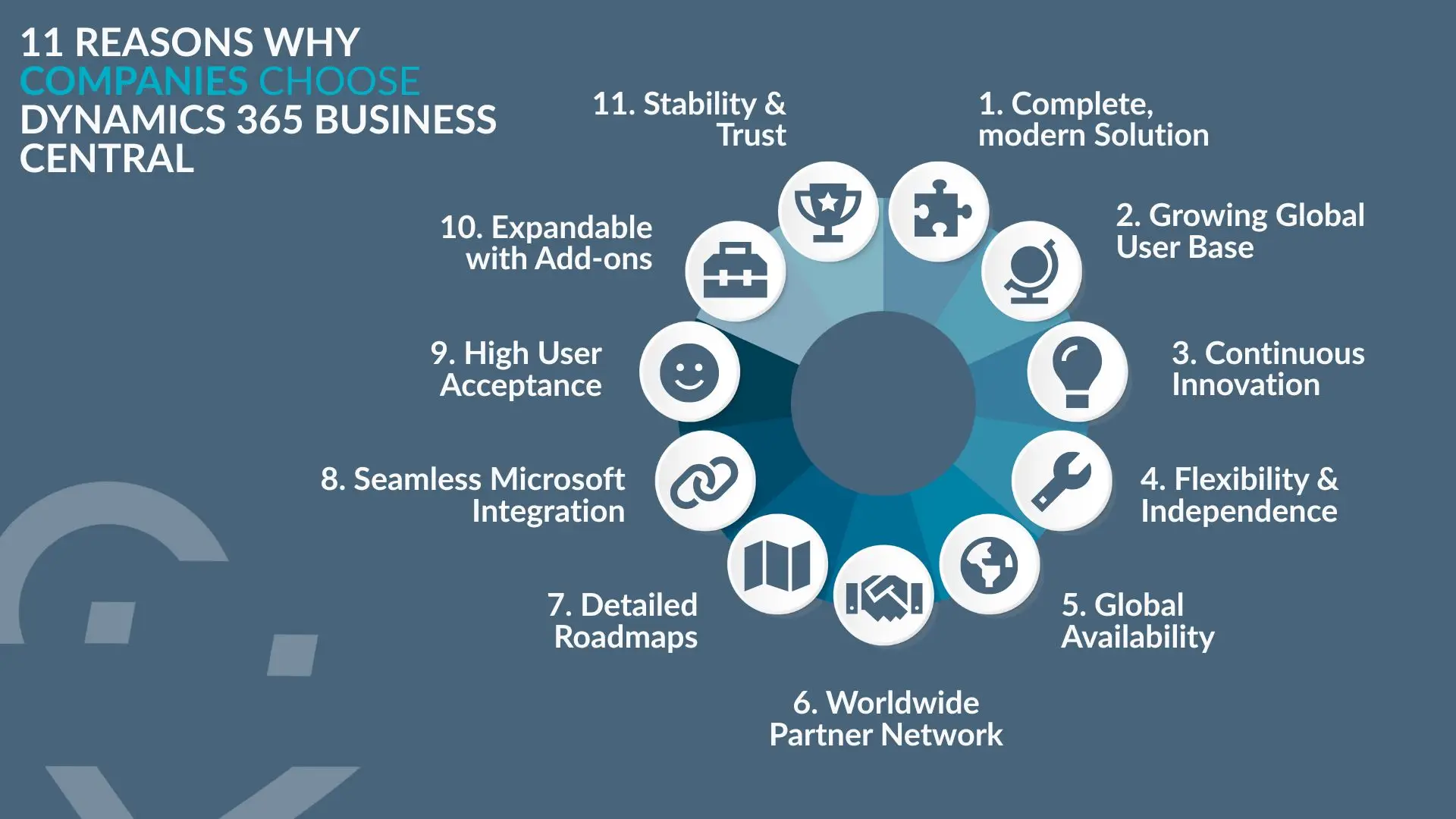Modernize Processes and make them More Efficient Digitalization in
the Publishing
Industry
the
The processes in publishing companies ✍️ are often complex and differ from those in other industries. This makes it all the more important to work with a partner who understands the specific requirements and processes in the publishing industry and is familiar with the potential pitfalls during implementation when implementing an ERP system. Not only will they help you successfully master the implementation of the ERP solution, but they will also advise you on all questions relating to the solution afterwards.
Publishing Industry in Transition
Production cycles are becoming shorter and shorter, digital distribution channels are gaining in importance, and on top of that there is complex rights and license management. These conditions are putting traditional publishing processes to the test. Many companies are faced with the challenge of modernizing their existing processes and making them more efficient, without losing sight of their publishing identity and editorial strengths. Modern ERP systems can provide valuable support in this regard: they connect business areas, create transparency, and enable integrated control of all processes.
Digitalization in the Publishing Industry – and its Opportunities and Challenges for Companies
Printed books and magazines alone are often no longer enough in today’s publishing industry. Readers increasingly want digital content that is flexible, interactive, and accessible at any time. This has meant that publishers have had to rethink their approach for some time now. However, this does not mean that everything that has proven itself in the past has to be thrown overboard. Rather, it is a matter of integrating new technologies into existing processes in a meaningful way and combining the best of both worlds.
Digitalization brings new opportunities for publishers, but at the same time also presents them with new challenges.

Digitalization is opening up tons of new chances for publishers to revamp their businesses and make them future-proof. To stay competitive, it’s becoming more and more important to organize internal processes in a way that’s streamlined, efficient, and resource-friendly. This is where modern ERP software comes into play. Dynamics 365 Business Central, the ERP solution from Microsoft, is particularly suitable. Especially when combined with an industry solution, it can very well map the specific requirements of publishing companies.

Microsoft Dynamics 365 Business Central The favorite
ERP Solution of SMEs
ERP
Many publishing companies work with structures that have evolved over time. On the one hand, this ensures stability, but on the other hand, it can also make it more difficult to embrace change. A well-implemented ERP system helps to integrate digital processes in a meaningful way without losing sight of tradition.
The importance of digitalization is also reflected in the industry trends for 2025. In addition, the increasing importance of artificial intelligence is also a key focus.
The Advantages of an ERP System for your Publishing Company
An ERP system offers publishers a centralized, integrated platform for managing fundamental business processes. If you work in a company in the publishing industry, implementing an ERP solution brings the following advantages:
Microsoft’s ERP system Dynamics 365 Business Central provides a solid data foundation and can be easily connected to additional systems that provide publishing-specific information. Thanks to Microsoft’s state-of-the-art interface standards, smooth collaboration and better decision-making are possible.
An ERP system such as Business Central automates time-consuming manual processes, such as fee calculations for authors and licensors. Complex calculations based on sales figures, contract terms, and participation models are performed automatically and without errors. This not only saves time but also increases transparency.
The centralized collection and linking of data on titles, production status, inventory levels, and distribution enables realistic planning and monitoring of production and publication dates. Bottlenecks or delays can be identified at an early stage, enabling reliable coordination with authors, printers, and distribution partners. All of this can be implemented very effectively with the help of customizations or industry solutions.
Why is Business Central particularly well suited to the Publishing Industry?
The standard version of Dynamics 365 Business Central covers core business processes:
- Finance (customers, vendors)
- Warehouse management
- Order processing and invoicing
- Purchasing and sales
- Project management
- CRM
The standard can be expanded to meet your specific requirements. For example, the system allows you to create user-defined fields and tables. Workflows and reports can also be easily customized. Extensions from App Source or via AL code are also possible.
As already mentioned, connecting external systems is also possible without any problems. For example, you can easily integrate e-commerce platforms or payment systems via standard interfaces or APIs. Data exports (e.g., ONIX metadata and Excel reports) can also be implemented.
Business Central is available as a cloud solution. This allows employees to access relevant data and workspaces anytime, anywhere. The cloud version is also updated automatically, so you are always working with the latest version.
The system is easy to use for your employees. New employees (whether in editing, sales, marketing, or accounting) can also quickly find their way around the system. This reduces training costs and training periods.
Each department (e.g., editorial, sales, finance) only sees the information relevant to it, which increases clarity and simplifies daily work.
What’s more, Business Central is part of the Microsoft ecosystem. This provides a connection to services such as Excel, Outlook, Teams, Power BI, and SharePoint. This can be particularly helpful when it comes to editing, project work, marketing, and controlling. If you already work with Microsoft products, BC integrates seamlessly.
The Significance of AI for the Publishing Industry
Artificial intelligence is one of the trends in the publishing industry for 2025. In the area of technology, publishers invest heavily in AI.
According to a recent report, around 42% of all administrative tasks in publishing houses are expected to be automated by AI in the future. AI is now also being used to support editorial work in particular.
AI can help publishers create personalized, high-quality content and optimize editorial processes. This offers many opportunities, but also intensifies competition within the industry. Publishers are therefore dependent on solutions that provide them with optimal support in order to keep up with the competition. For this reason, companies in the publishing industry should be open to the diverse possibilities offered by AI and explore its potential.

More Efficiency with AI 4 New
Copilot Features in
Dynamics 365 Business Central
Copilot
Dynamics 365
How Change Management supports Transformation
However, digitalization in the publishing industry requires more than just the implementation of new, modern technologies. In many cases, active change management is necessary for the changes to take effect successfully. This is because every technological change also affects familiar processes, roles, and often the self-image of individual departments.
Well-thought-out change management helps you to make this transition structured and transparent. It provides clarity about goals, encourages participation at all levels, and gives the team the opportunity to familiarize themselves with the innovations. Training, open communication, and the early involvement of employees contribute to the success of digital transformation.
Conclusion
Working with an ERP solution such as Dynamics 365 Business Central (in combination with an industry solution) offers a number of advantages. You have the opportunity to simplify numerous processes in your company and make them more efficient. And you can make your company fit for the future.
Digitalization in Publishing: Our Expertise
At AGOLUTION, we know the challenges and stumbling blocks that ERP projects bring and understand how to deal with them. We also have experience working with companies in the publishing industry. Feel free to contact us if you are planning an ERP project and are looking for a reliable partner with experience and industry knowledge.



 Business Central empowers Companies
Business Central empowers Companies
